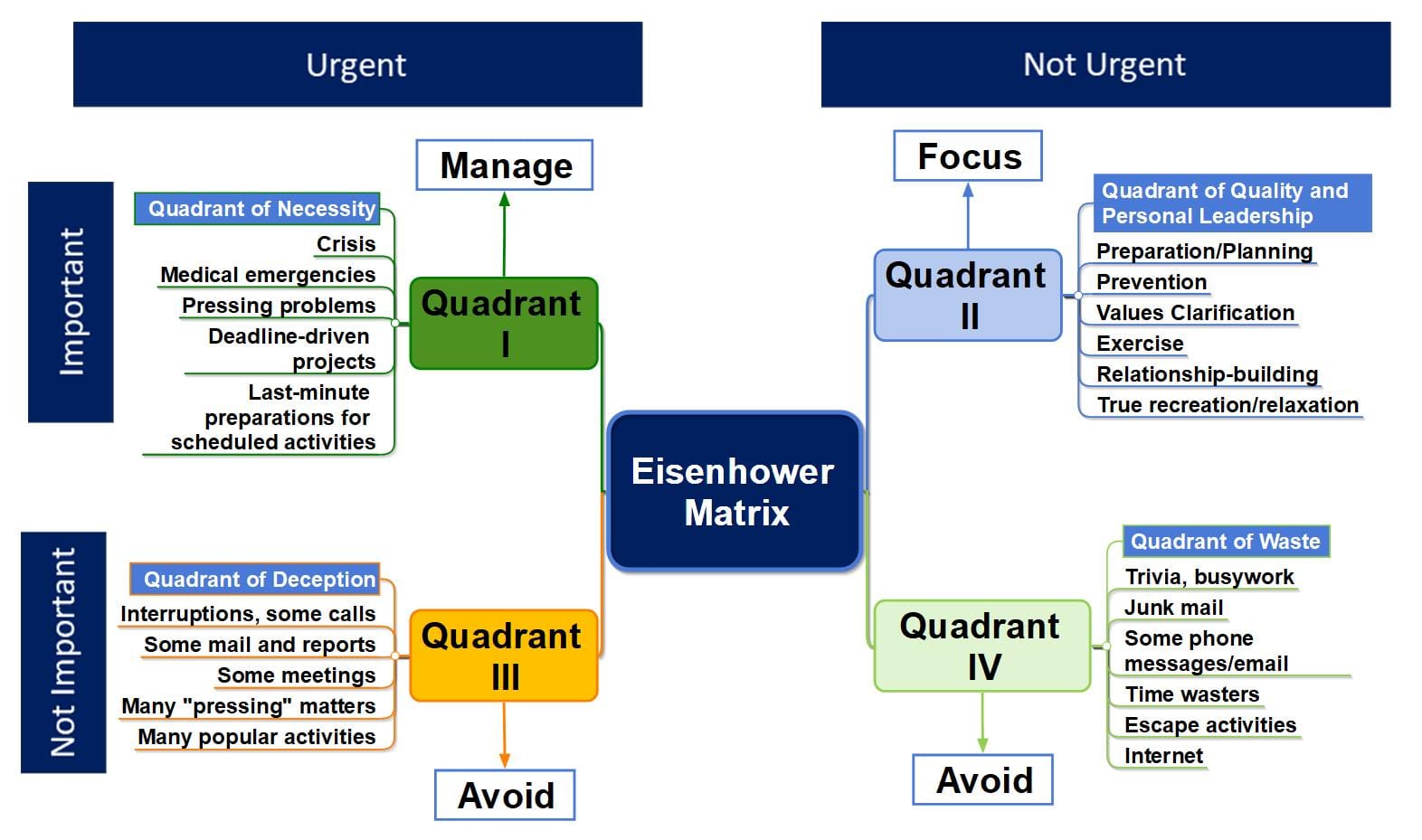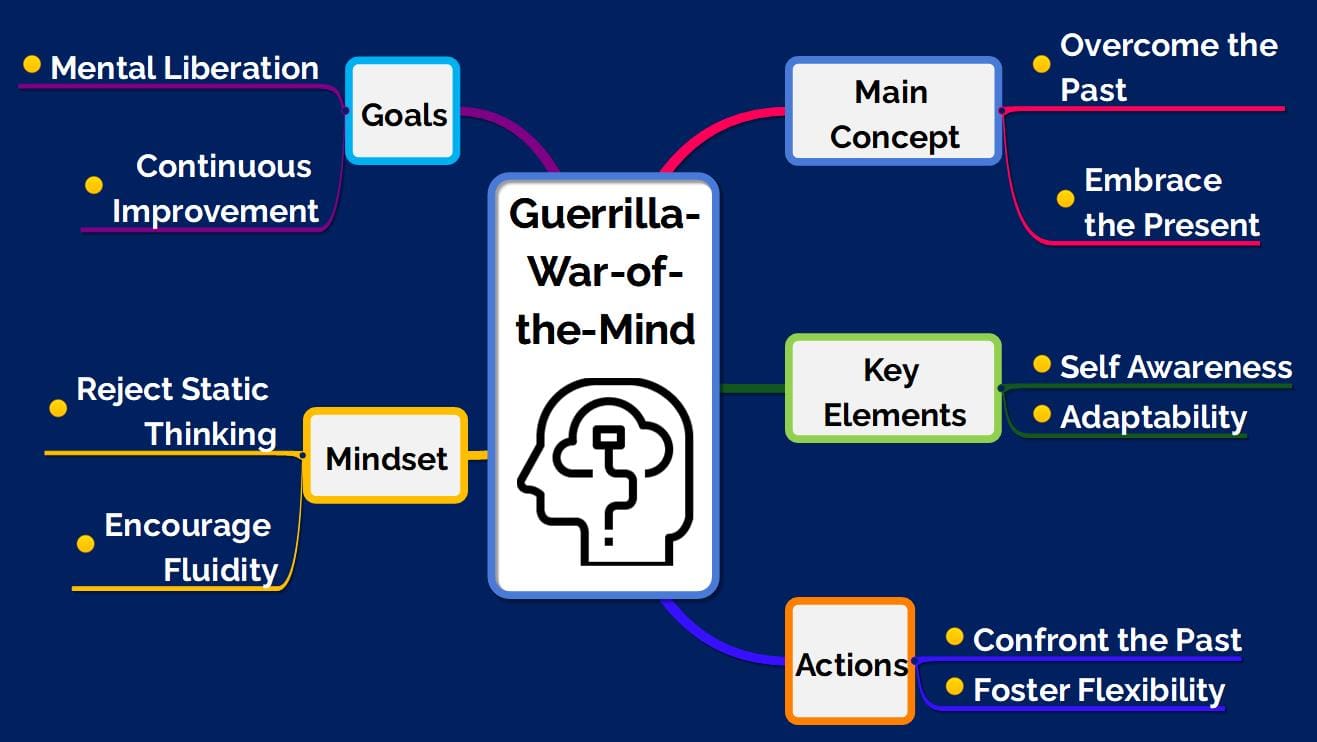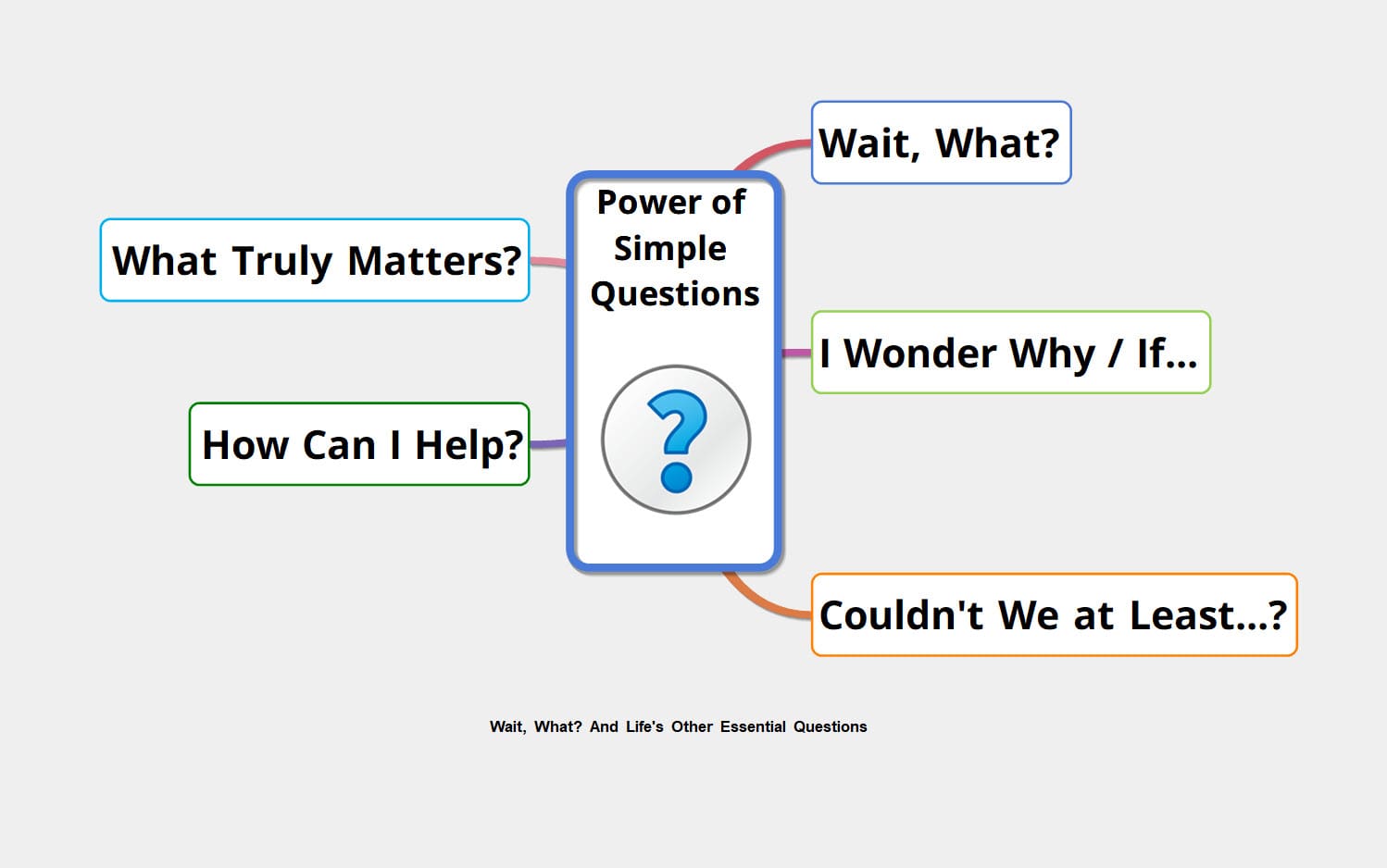Introduction:
In the relentless pace of today’s business world, managing time effectively is not just a skill but a necessity. The Eisenhower Matrix, also known as Covey’s Time Management Matrix, offers a strategic approach to time management, crucial for business professionals striving for peak performance.
Understanding the Eisenhower/Covey Matrix:
The Eisenhower Matrix, popularized by Stephen Covey in his influential book “The 7 Habits of Highly Effective People,” categorizes tasks into four quadrants based on urgency and importance:
- Quadrant 1 (Urgent and Important): These are tasks requiring immediate attention, often crisis-driven or deadline-focused.
- Quadrant 2 (Not Urgent but Important): This quadrant is key to long-term success, involving strategic planning, relationship building, and personal growth.
- Quadrant 3 (Urgent but Not Important): Tasks here seem urgent but don’t contribute significantly to long-term goals or values.
- Quadrant 4 (Neither Urgent nor Important): These are distractions, offering little value and often serving as escape activities.
The Relevance of the Matrix in Business:
For business professionals, distinguishing between these quadrants is vital. Covey emphasizes that highly effective people spend most of their time in Quadrant 2, focusing on activities that are important but not urgent, such as networking, skill development, and planning. These activities, although not pressing, are crucial for long-term success and effectiveness.
Applying the Matrix:
- Prioritization: Evaluate tasks based on their contribution to long-term goals.
- Delegation: Assign urgent but less important tasks (Quadrant 3) to others when possible.
- Saying No: Avoid tasks in Quadrant 4, which are neither urgent nor important.
- Scheduled Planning: Allocate specific times for Quadrant 2 activities to ensure they are not overshadowed by urgent tasks.
Why It Matters:
Covey’s insights, derived from his extensive study of success literature and personal effectiveness, reveal that focusing solely on the urgent (Quadrants 1 and 3) leads to a reactive lifestyle, dominated by external demands. By investing time in Quadrant 2, professionals cultivate a proactive approach, aligning their daily actions with their deepest values and long-term objectives.
Challenges in Implementation:
Adopting the Eisenhower/Covey Matrix is not without its challenges. It requires discipline to not get constantly swayed by urgent but less important tasks. Additionally, it demands a paradigm shift – a term Covey describes as a change in our fundamental perceptions and interpretations of how the world works. As professionals, we must recalibrate our understanding of productivity, recognizing that true effectiveness comes from focusing on the important rather than just the urgent.
Covey’s Deeper Insights:
In “The 7 Habits of Highly Effective People,” Covey elaborates on the need for character ethic over personality ethic. The character ethic, embodying qualities like integrity, patience, and humility, forms the foundation for genuine effectiveness. Conversely, the personality ethic, focused on quick-fix solutions and surface-level techniques, fails to address deeper character and ethical issues. This distinction is crucial in understanding why the Eisenhower Matrix is more than just a time management tool; it is a framework grounded in principles of effective living.
Final Thoughts:
The Eisenhower/Covey Time Management Matrix is not just about managing tasks; it’s about aligning one’s daily actions with overarching life principles and goals. For business professionals, mastering this matrix means moving beyond mere efficiency to genuine effectiveness, ensuring that every hour spent contributes to long-term success and fulfillment.






